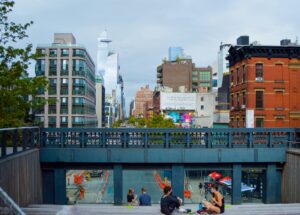If current trends continue, the future of humankind is in cities, and urban childhoods are set to become the global norm. Yet, as they grow, few cities work well for their inhabitants. Too many – in high-, middle- and low-income countries – are polluted, car-dominated and inequitable.
How might we improve the built form of cities so that they are a force for good: not just for children, but for everyone, and for the planet? One compelling answer – set out in my book Urban Playground – is to adopt child-friendly urban planning and design: to make the public realm of cities – their streets, squares and parks – more accessible, welcoming and engaging for children of all ages. This approach embraces the maxim made popular by Enrique Peñalosa, former mayor of Bogotá, that the child is an ‘indicator species’ for cities. The presence of children of different ages playing and moving around – being active and visible in public space – is a sign of the health of urban habitats, just like salmon thriving in a river.
While the importance of housing and urban utilities is unarguable, child-friendly urban planning highlights spatial features that make a difference to children’s well-being and quality of life, beyond their basic needs. Because children need not just to survive but to thrive: to take their rightful place in urban public life.
Child-friendly urban planning offers a substantive vision for neighbourhoods: one that sees children’s everyday freedoms, and the resulting benefits for them and their families, as essential. It also focuses on built environment disciplines.
Read the full article on Cities4Children
Author: Tim Gill
Recommended by Stephanie Cheung











More Stories
A stealthy reimagining of urban public space by Elizabeth Diller
Security by Design: Protection of public spaces from terrorist attacks
10 years of Global Public Space Programme – Annual Report 2022 and reflections on a Decade of Public Space